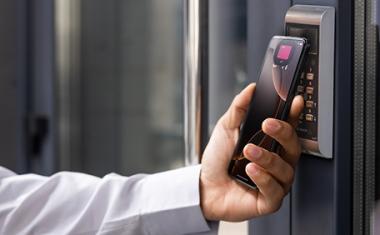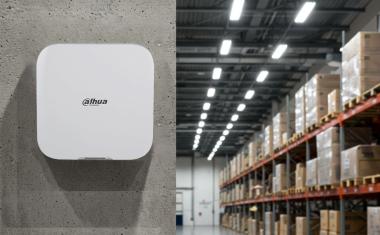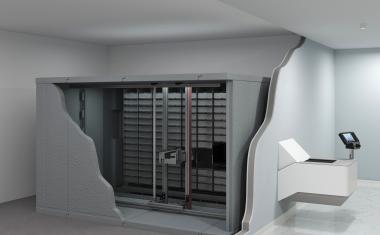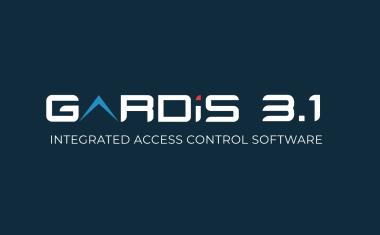Bosch offers innovating security where needed
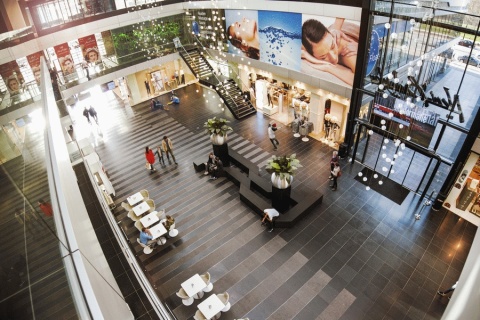
In the retail industry, video surveillance usually forms the basis of a business’ security system. Reducing shrinkage and providing evidence in the event of theft have traditionally been the main motivations for installing cameras. Over the last decades, development has been largely focused on higher resolution and better image quality, and these aspects are still important today. However, with the advent of digital cameras and built-in intelligence, entirely new applications have appeared on the horizon, offering not just peace of mind, but real business value also.
In the retail industry, shrinkage is one of the most significant challenges faced by companies. On a global basis, shrinkage cost retailers some 110 billion Euros in 2015 alone1. About half of the damage is the direct result of not only thieving customers, but employees as well. In Germany, dishonest employees account for approximately four percent of all theft, but are also responsible for more than a quarter of the losses2. The majority of this is due to so called “sweet-hearting”, where employees operating cash registers give away merchandise to friends and family without charging them. Even suppliers must be taken into account - almost 5 percent of all shrinkage comes down to merchandise never even making it to the shelves2.
Due to the competitive nature of the retail industry, a market with relatively low margins, it is obvious that retailers in all market segments must invest into suitable technologies to reduce shrinkage as an integral part of their overall safety and security strategy. The primary goal of such a strategy will always be to provide optimal safety for staff, customers and suppliers with fire detection technologies being the heart and soul of the system. As not all theft occurs during store hours, an intrusion detection system may also be necessary. And once such an intrusion detection system is in place, it can, with the appropriate technology, even double up as a real money saver when you implement additional detectors on freezer and fridge doors in a grocery store that will alert staff when such doors are still open when the system is being armed at night. Integration of different safety and security systems by means of a central management system can greatly increase security levels and operational efficiency, as video can then automatically be used to verify alarms from the other systems.
While fire protection is generally required by law and the related investment is thus unavoidable for shop owners, the installation of other security systems is usually driven by business decisions alone. A common reason for the installation of such systems is a crime or security incident that captures the attention of retail management. However, more and more often the mere potential of such incidents calls for state-of-the-art technologies to prevent such crimes in the first place.
Prevention and detection
When talking about shrinkage and security in a retail setting, video surveillance is usually the first thing that springs to mind. And for good reason: Video surveillance can both prevent theft and help to identify thieves after the act, once prevention has not succeeded in deterring them. It can be used to pinpoint suspicious behavior on the shop floor just as it can secure non-public areas such as warehouses or offices. And while one or two general-purpose cameras may be sufficient to secure a small retail outlet, there are also sophisticated and specialized solutions for monitoring cashier desks, outdoor areas, parking lots, warehouses and other parts of the premises. It is little wonder therefore that some form of video surveillance can be found in almost every retail store around the globe.
However, not all make full use of the potential of today's cameras. Technology has greatly improved in recent years, mainly due to digitalization. State-of-the-art built-in video analytics in network cameras not only deliver ultimate high-resolution images, even under challenging lighting conditions; they also can act as an enabler of entirely new applications beyond mere surveillance, offering real business benefits.
As one would expect, image quality and thus resolution has been one of the major areas of focus. Yet, while we have witnessed dramatic increases in resolution in digital consumer products, development has been somewhat slower with surveillance cameras. There is a simple reason for this: surveillance camera images have to be managed, transmitted and analyzed in real time, and usually they must also be stored and kept for a certain amount of time. It is not uncommon for the storage system alone to account for half the cost of a video surveillance solution, and transmitting high-resolution images in real time puts a lot of burden on the underlying network. This is why current developments do not focus on resolution alone, but also on advanced technologies to reduce the data volume associated with video surveillance without losing relevant image information.
Today, many current surveillance cameras offer HD or even 4K ultra HD resolution with up to 8 megapixels. Such cameras can deliver very detailed images, greatly improving the operator's ability to detect suspicious activity. Further, new developments such as Bosch's starlight technology have brought breakthroughs such as light sensitivity in cameras; showing color images where traditional cameras can show only black and white and showing black and white where others show no image at all. While such technologies may not be required on the well-lit shop floor during store hours, they can offer tremendous benefits when outdoor areas and storage rooms must be monitored as well.
Another interesting development for retailers is the advent of panoramic cameras. With their 180- or 360-degree overview in a single image they solve the well-known problem of blind spots. Panoramic cameras for both indoor and outdoor environments are readily available from Bosch with resolutions of up to 12 megapixel and 30 frames per second, offering high quality video around the clock. They offer a complete overview of a particular area in one simple view without blind spots allowing the easy capture of moving objects in that area. Significantly improving the performance of the video surveillance solution. Combined with Bosch Video Security Client software the user can select up to 6 different viewing modes.
Breakthrough imaging
Bosch IP cameras come with Content Based Imaging Technology. This Bosch innovation intelligently combines information from the sensor, image pipe, encoder and its video analytics to dynamically optimize the image for every scene. An option enabled by CBIT and available on selected cameras is Intelligent Auto Exposure, which ensures the perfect picture in every situation regardless of lighting conditions. Intelligent Dynamic Noise Reduction technology, which is standard in all Bosch IP cameras, reduces the bitrate by up to 50 percent by cleverly optimizing the detail-to-bandwidth ratio without compromising video quality. “Reducing bandwidth without compromising image quality is one thing, however shop owners cannot be everywhere at all times, especially in a small to medium sized business. That is why Bosch offers Dynamic Transcoding technology. By applying this technology, high-resolution images or smooth video streams can be viewed from any location that has access to the internet, even in the event of slow mobile internet connection. The free Video Security app, available for both iOS and Android devices, offers instant real-time access to video. It also allows users to scroll through various camera locations with a single swipe and control their cameras including pan, tilt, zoom and focus functions. To view multiple sites or cameras simultaneously, users can make use of the free Video Security Client. This viewing software supports desktops, 2-in-1 laptops and mobile devices running Windows 8. By combining one of the mentioned free viewing clients, or the Bosch Video Management Software with built-in video analytics, users can easily conduct forensic searches on recorded video from anywhere at any time. This can offer valuable information to security staff or police during their investigation of an incident.
Video analytics
Building intelligence into the camera not only delivers better images, but also greatly improves the manageability of data, overall security and forensics. Today’s network-based monitoring and video content analysis enables a significantly more accurate detection of incidents, as lack of concentration and other human errors are excluded from the outset. Secondly, they make security staff more efficient, since operators only have to respond to alerts rather than continuously monitor a huge number of live images. This allows operators to spend more time on other tasks. Accuracy and speed are both increased using metadata instead of the actual video recordings. Such metadata consists of small text strings describing objects or movements, which are much smaller than the images themselves and can be searched fast and automatically.
Advanced video analytics, such as Essential Video Analytics and Intelligent Video Analytics from Bosch allow for custom-made detection algorithms to intelligently detect or track objects of interest. For example, when an object such as a car with a certain size and color moving at a certain speeds crosses a line an alarm needs to be triggered or (in case of a moving camera) the objects needs to be tracked. As soon as this algorithm is defined, the system will automatically either trigger an alarm or starts to intelligent track an object that meets the pre-defined criteria.
Adding business value with video analytics
Going way beyond security applications, Essential Video Analytics or Intelligent Video Analytics can also act as an enabler of an entirely new application in retail environments. Few of these can be found in real world stores today, but will clearly become more popular in the next couple of years as they can offer tremendous added value without the need for substantial investments. One such example is a combination of crowd density and movement information for the optimization of shop layout. Another example would be the combination of people counting and object in field information, which can deliver useful information for the analysis of in-store promotions.
Integrate such a solution with your POS systems, and you will even be able to calculate conversion rates. For example, while the POS application knows exactly how many units you have sold, video analytics or intelligent video provides information concerning the number of people who have passed by an in-store promotion (people counting) and those who have lingered in front of the promotion for more than 30 seconds (object in field information), which could indicate interest. When these numbers are compared with the actual number of units sold (POS system), it will indicate a certain gap. This could mean that although people seem to indicate interest (by lingering in front of a display longer than 30 seconds), another element, such as price perhaps did not meet their expectations. Based on these statistics, in-store research could be conducted to determine why such a display of interest did not converted into a sale. In the long term, data generated by either Essential Video Analytics or Intelligent Video Analytics could play a vital role in improving in-store marketing.
Chains can also use statistical data from intelligent video surveillance to benchmark their individual outlets or to directly compare how different presentations of goods influence customer behavior.
Customer service is another interesting area of application where this technology could improve retail business. For example, queuing information can alert management when a checkout is unmanned or insufficiently staffed, enabling quicker reactions and thus a better shopping experience for the customer. If a camera identifies an individual loitering in front of shelves with high priced items, chances are that this customer will need some attention - either to be helped or to avoid theft.
Finally, in large shopping malls or in shop-in-shop environments, one vision is to empower the mall operator to develop rental charge schemes based on real and proven traffic. In addition, such data can be used to detect bottlenecks and hotspots and thus to improve space utilization within the mall.
Recognizing the importance of video analytics in the field of retail for the improvement of security, to help keep data manageable but also to enable value add to business, Bosch will offer built-in video analytics in all of its network cameras starting from the IP 4000 series in the next 12 months.
Footnotes
1: Global Retail Theft Barometer 2014-15
2: Global Retail Theft Barometer 2011
No more blind spots
With FLEXIDOME IP panoramic cameras from Bosch, storeowners will never miss anything again. The FLEXIDOME IP panoramic 7000 MP indoor camera offers a full 180-degree or 360-degree overview of a particular area with 12 megapixel sensor resolution at 30 frames per second combined with a fish-eye lens. For indoor and outdoor applications, the FLEXIDOME IP panoramic 5000 MP offers the smallest 360-degree dome design available on the market combining a five megapixel sensor resolution at 15 frames per second with a fish-eye lens. Both camera models ensure a complete overview in a single image without blind spots and the easy capture of moving objects, significantly improving the performance of retail video surveillance solutions. Combined with the Video Security Client software, the user can select up to six different viewing modes. The FLEXIDOME IP panoramic 7000 MP camera features a full suite of on-board intelligent video analytics to ensure that operators are alerted when needed and relevant information is delivered most efficiently both live and in retrospect.












